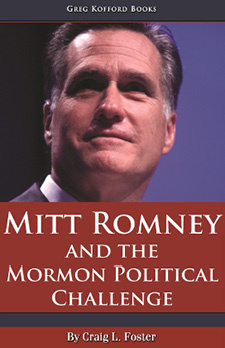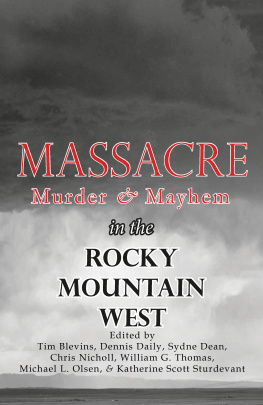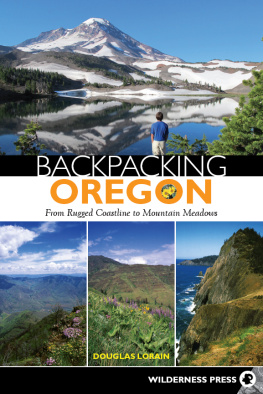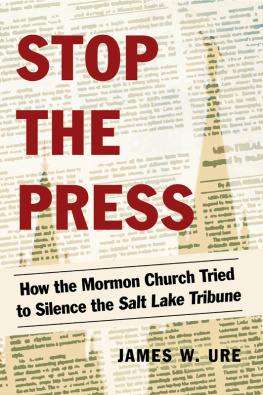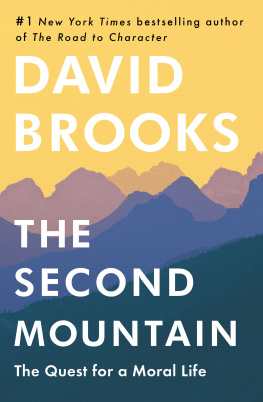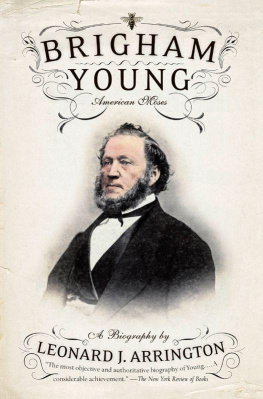The
MOUNTAIN
MEADOWS
MASSACRE
By Juanita Brooks
Foreword and Afterword by Jan Shipps
UNIVERSITY OF OKLAHOMA PRESS : NORMAN

2800 Venture Drive
Norman, Oklahoma 73069
www.oupress.com
Copyright 1950 by the University of Oklahoma Press, Norman, Publishing Division of the University. Manufactured in the U.S.A.
All rights reserved. No part of this publication may be reproduced, stored in a retrieval system, or transmitted, in any form or by any means, electronic, mechanical, photocopying, recording, or otherwiseexcept as permitted under Section 107 or 108 of the United States Copyright Actwithout the prior permission of the University of Oklahoma Press.
For information about permission to reproduce selections from this book, write to Permissions, University of Oklahoma Press, 2800 Venture Drive, Norman, Oklahoma 73069 or email
ISBN 978-0-8061-2318-9 (paperback : alk. paper)
ISBN 978-0-8061-8524-8 (ebook : mobipocket)
ISBN 978-0-8061-8538-5 (ebook : epub)
This eBook was converted from the original source file by a third-party vendor. Readers who notice any formatting, textual, or readability issues are encouraged to contact the publisher at .
Contents
Illustrations
Foreword
by Jan Shipps
RARELY IN THE writing of the history of any controversial or tragic event has a single historical work had such a far-reaching impact as has Mountain Meadows Massacre. Rarely, too, has any historical monograph stood the test of time so well. First published in 1950 and published in a new edition in 1962, the book went through nine printings in hardback before the editors of the University of Oklahoma Press decided to issue a paperback edition.
While the publication of notable historical works in paper is nearly always appreciated, the appearance of this celebrated monograph in a new format merits more than an ordinary welcome. Although this is not a new edition, as such, new material has been added to bring the work up to date. Readers are provided with a revised, detailed map of the site where the tragedy occurred. Included also is a recent photograph of the area showing the new memorial that was installed there in the summer of 1990 and on which the names of all the victims are inscribed.
Juanita Brooks, sometime college English teacher, fulltime Mormon wife and mother, and lifelong resident of Saint George in Utahs southernmost region, its Dixie, began more than fifty years ago to work on the project that led to the writing of Mountain Meadows Massacre. Although she went on to complete other major scholarly ventures, this book, described on the dust jacket of the second edition as a near-classic treatment of the terrible tragedy, became the authors masterpiece. Despite enormous advances in the fields of western and Mormon history during the past half century, this book has never been bettered from the standpoint of the information it provides about what transpired when a party of emigrants from Arkansas attempted to take the southern route from Great Salt Lake City to California in September, 1857, andexcept for eighteen young childrenwere murdered by members of a Mormon militia unit and their Indian allies. Nor does any subsequent historical account contain better answers to the inevitable and pressing questions about where the blame for the massacre must be placed, what roles Mormon church President Brigham Young and Latter-day Saint officials in southern Utah played in precipitating the tragedy, and what possible reasons might explain the mass murder of this particular Gentile emigrant party. Brookss work also contains the authoritative explanation of how the entire blame for the massacre was shifted onto the shoulders of John D. Lee and how, with the connivance of the Mormon church, he was made the scapegoat. Excommunicated for his part in the butchery, he was allowedfollowing conviction by a jury of Latter-day Saint peers and subsequent executionto carry to his grave Mormondoms guilt for this horrible and barbaric act.
Brooks was a natural storyteller and gifted writer whose Mormonness was as much a part of her identity as her gender or family of origin. That she would choose the remote, virtually isolated region of the Great Basin where she grew up as locale and her own people, the staunch Latter-day Saint pioneers in southern Utah, as her subjects could have been anticipated. But since literature was her chosen field of study, it is somewhat surprising that she made her mark as a historian. For this, accidents of time and place were primarily responsible.
Born and bred in Utahs Dixie, Juanita grew up knowing about what happened at nearby Mountain Meadows in the days when her grandfather was young. What she knew, however, was what most Mormons of her generation knew, that is, that in 1857 an Indian attack on a wagon train had resulted in an appalling loss of life and that non-Mormons usually blamed the Saints for the massacre of the innocent travelers. She was not aware that most of the older Latter-day Saints in Dixie knew an altogether different version of the story. Not until she was twenty, when she was approached by an elderly Mormon settler who wanted her to record things he said his eyes had witnessed, but his tongue had never uttered, did she begin to suspect the awful truth.
Although she arrived at Nephi Johnsons deathbed too late to hear his story, she was not too late to hear him yell BLOOD! BLOOD! BLOOD! and to have the reason for that frightened exclamation explained by others at his bedside. Learning that the aged Saint had been at Mountain Meadows led Brooks to believe that the story of the tragedy that she had been told was just thata story. Only gradually did she come to realize that the reality of Mountain Meadows and, of equal consequence, the secrecy that kept the perpetrators and their descendants from acknowledging and dealing with their guilt, presided like a gruesome specter over Mormon memories in southern Utah. While not always perceptible, the massacre and the secrecy that surrounded it were always there.
Establishing herself as a free-lance writer in the 1920s, Brooks built a reputation with articles based on pioneer diaries. This led to a position with the Historical Records Survey during the Great Depression and, later, to a position as a collector of pioneer diaries for the Huntington Library. Both positions gave her access to a great body of primary source material that would prove invaluable when she began systematic research on the lamentable affair at Mountain Meadows.
Recognizing that Mormons as well as Indians were involved, Brooks worked during the years of the Second World War to create a clear chronology of the massacre, an incident she came to understand in terms of the bloodshed and carnage attending the Utah War that the United States had mounted against the Saints in 1857. She used diaries and other documentary evidence to delineate a picture of the wartime ambience in which the killing occurred, as well as to verify the names and ascertain the actions of the Saints who participatedthe list included her own grandfatherand to discover when the decision to commit the deed was made and how that decision was turned into action. In the process of writing up her findings, Brooks also demonstrated that with the decision to sacrifice John D. Lee, the LDS church committed itself to suppressing the truth about what had happened. As the current dean of American church historians, Robert T. Handy, noted in 1951 when he reviewed Mountain Meadows Massacre for the Journal of Religion,


